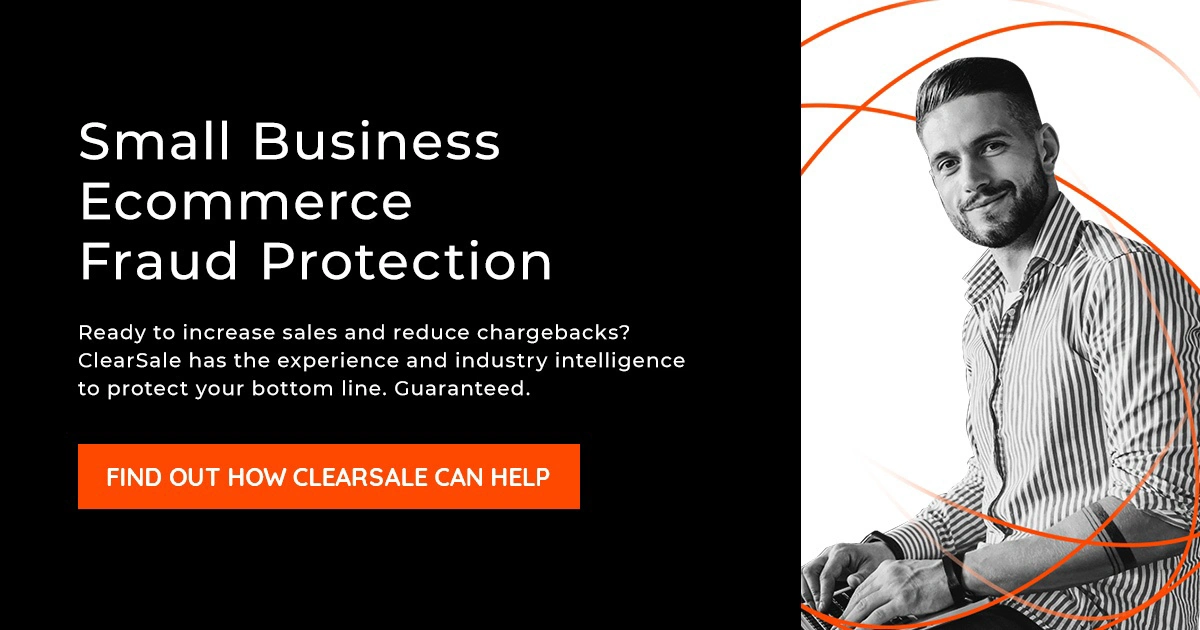How Your Shopping Cart Can Improve the Online Customer Experience
If you’re like many other ecommerce businesses, the pandemic resulted in an influx of new customers filling their online shopping carts on your site.
But not all of them followed through on the promise of those purchases. Shopping cart abandonment rates reached nearly 90% in 2020 and was still tracking at almost 80% in early 2021. If experts are correct and ecommerce sales reaches nearly $600 billion by 2025, merchants need a way to solve the cart abandonment conundrum to take advantage of this surge.
Your starting point? Examining the entire shopping process from your customers’ perspective. What is preventing a customer from completing a sale? What obstacles can you remove? Finally, how can you knock their CX socks off?
Let’s start with the “why” of cart abandonment.
What Causes Ecommerce Abandonment?
There’s a lot of talk about cart abandonment. But there are actually two types of abandonment ecommerce businesses need to look at – why customers abandon their shopping carts and why they abandon the checkout process.
Cart Abandonment
Cart abandonment was commonplace during the pandemic. Consumers longed to escape the reality of being stuck at home and filled their online shopping carts with everything that even slightly interested them – often items that were far outside of their budget. They were window shopping, fantasizing about the “what if” to take their minds off the “what is” at the time.
Eventually, customers realized they couldn’t afford those items or the cost to ship them was too expensive. Or they were new to online shopping and couldn’t quite muddle their way through to the checkout. In any and all of those scenarios, customers gave up and left the online store.
Even without the pandemic, cart abandonment is quite common for online retailers, especially in high-risk, high-cost industries like luxury goods and consumer electronics.
Checkout Abandonment
Where cart abandonment can be due to customers’ eyes being bigger than their bank accounts, checkout abandonment is usually due to a poor customer experience.
With checkout abandonment, your customers make it to the last page of your website before they actually spend their money and order your products. They want to order, but the process is either too cumbersome or confusing for them to do so.
Maybe your online forms are hard to complete and you have no auto-fill function. You could be asking too many questions, and your customers get fatigued or feel you’re prying into their personal lives. Your instructions might be difficult to read. Or, you have add on services, like an additional charge for “protection” but no details to tell customers what is entailed.
Other reasons why customers abandon checkout include:
- They don’t want to create an account before making a purchase.
- They aren’t clear about delivery times or need it sooner.
- They can’t see total costs up front.
- Shipping costs are only revealed at the end – and are too high for the customer.
- They can’t find their preferred payment method.
The good news? You can make some straightforward changes to your online shopping cart that will significantly improve the customer experience. You’ll reduce checkout abandonment and help limit cart abandonment.
Improving Your Online Shopping Cart and Customer Experience at Checkout
A Baymand Institute study found a better checkout flow and design could help online merchants recover $260 billion in lost orders, which equals an over 35% increase in conversion rate.
What does a better checkout flow and design look like? It looks like a frictionless checkout process that is transparent, has information upfront and is easy to navigate. It also requires merchants to make choices about how and when to present information.
One good example is when to upsell or cross-sell.
Avoid Pop-Ups for Upselling and Cross-Selling
Think about a customer in a brick-and-mortar store. The last thing they want is an annoying salesperson following them around, shoving related products in their face, and asking them to add those products to their shopping cart.
Instead, stores are carefully designed to present complementary products where customers are in the store, with inexpensive impulse buys (like candy bars, accessories or trial sizes) near the cashier to make them easy to grab.
Similar rules apply to your online store.
Don’t bombard customers with endless pop-up offers that require an answer before they can continue their checkout experience. Instead, consider presenting those cross-sell and upsell opportunities when customers are adding items to their shopping cart.
Offer Multiple Payment Options
In our State of Consumer Attitudes on Ecommerce, Fraud, & CX 2021 Report, consumers spoke loud and clear about payment options – and their opinions vary by generation. Baby boomers tend to use credit cards for their purchases. Gen Xers, comfortable with analog and digital, are fine using either credit cards or digital wallets, with 46% of our respondents saying they “sometimes” use the latter. Millennials and Gen Z, however, are more likely to look for digital wallets when they shop online. In fact, digital wallets will account for almost a third of payments by 2023.
Merchants need to know their customer demographics and offer payment options that appeal to them.
Keep in mind that alternative payment methods like buy now, pay later and Pay-in-4 are becoming more commonplace. Online stores need to offer as much versatility as possible to make checkout as seamless as possible.
Allow Customers to Save Payment Information
On a related note, give customers the option to save payment information. (Understand that some customers won’t want to, so don’t make it mandatory.) The ability to auto-populate credit card information can be what gets some customers to the finish line. It also can help reduce the typing errors that lead to false declines.
Again, less friction, more completed transactions.
Facilitate Easy Cart Editing
Cart editing can be an online merchant’s downfall. If you’re making customers back out of their cart to edit their purchase, you’re basically forcing them to abandon check out. Make sure there’s an easy way to change the number, color, size and other factors about the products your customers are purchasing.

More tactics to improve customers’ online experience during check out include:
- Show the total order cost up front. Before customers ever start the checkout process, show them their current totals (including shipping and taxes).
- Make it mobile friendly. It should go without saying that every ecommerce site must be optimized for mobile devices.
- Use address verification. Asking customers to type in their address more than once is cumbersome. Verify their address and auto-fill it afterward. Adding the option to make shipping and billing address the same can help improve the experience even more.
- Enable guest checkouts. While profiles make future purchases easier, many customers prefer the immediate speed of guest checkouts.
Choosing a Shopping Cart Extension
Choosing the right shopping cart extension may be the fastest way to implement many of these best practices. Select one that will help you reduce cart and checkout abandonment and increase conversion — but that will also be easy for you to install and customize.
When comparing extensions to use with your e-commerce site, consider whether each option:
- Is a high-quality, well-tested product with a solid reputation and positive customer reviews.
- Will integrate seamlessly with your e-commerce platform.
- Will integrate seamlessly with your fraud management solution.
- Offers comprehensive support.
- Offers features like single-page checkout, the ability to disable unnecessary fields, automatic total updates, and different shipping and billing addresses.

The key is to evaluate the needs of your customer, and not just go after the latest trend. For example, if your customer base is primarily baby boomers, they won’t necessarily be Venmo-friendly – no matter how hot it is right now. You need to determine what is going to benefit the customer most.
Gauge Your Site’s CX
It’s not enough to implement changes and assume they satisfy customers. Merchants need to get a read on how well their site will be received.
Perform Usability Testing
Usability testing is the best gift you can give yourself as a business because it gives insight into what your customers really think. This isn’t about your experience, it's about what your customers experience. You can only get that by asking them.

Engage your internal team, your clients and even a third-party tool to test out your site. Consider creating two different versions for A/B testing to gather feedback and make adjustments based on real-life experiences.
Proactively Correct Errors
When testing, merchants should expect errors to arise. Use them to your advantage: This is the opportunity to discover what will go wrong and what will cause customers to abandon their carts and the checkout process.
No matter how much bug-fixing your technical team does, the real test is when users start pushing your website to its limits.
Conduct Customer Satisfaction Surveys
The testing process doesn’t end when online merchants go live – it simply transitions to feedback. Again, this is a gift from your customers. Instead of waiting for it, ask them.
Find out as much information as you can:
- Ask them to describe their experience. What did they like? What did they not like?
- Was any part of the process confusing, complicated or repetitive?
- What should we keep? Fix? Get rid of?
If a customer abandoned their cart and you have contact information, ask them why and what you can do to improve their experience in the future. Even throw in a 10% discount or a gift card to incentivize them to not only give you feedback, but give you another shot at their business.
Another factor to look at is security. Many of your newest ecommerce customers are not experienced online. To keep them, merchants need to provide a secure shopping environment.
Prevent Fraud at Checkout
It’s important to keep your ecommerce store secure – without making checkout feel like Fort Knox.
Some companies take a blanket approach to fraud that is purely reactive. They hear about a fraud trend where transactions originating from one country or region have a high fraud rate and their solution is to wholesale decline transactions from that region. Or they set up automated rules that decline orders based on things like AVS mismatch.
It's not a good best practice because merchants end up declining good orders. And if you think a clunky checkout process is bad for business, it pales in comparison to what happens when you have too many false declines: Nearly 40% of customers will never shop with your online store again after being denied a valid transaction, and 34% will take to social media to complain about it.

The problem is, how do you know which transactions to approve and which to decline?
This is where it becomes important to partner with a fraud prevention company that can help you filter through the risky orders while allowing the good orders to come in. A fraud protection strategy that combines artificial intelligence and automatic processing with a manual process to evaluate potentially fraudulent transactions will give you the best and most accurate results.
If you’re ready to learn more about how ClearSale can help you increase conversions, reduce cart abandonment, manage your online customer experience, and prevent fraud, contact us today. We’ll help you create the best possible shopping experience for you and your customers.
 Brooke Carrie
Brooke Carrie

![Related Reading: [Trend Alert] Preventing BOPIS Fraud](https://no-cache.hubspot.com/cta/default/2530812/13b2d609-7a34-4b80-bf3e-27c3a19fb785.png)



